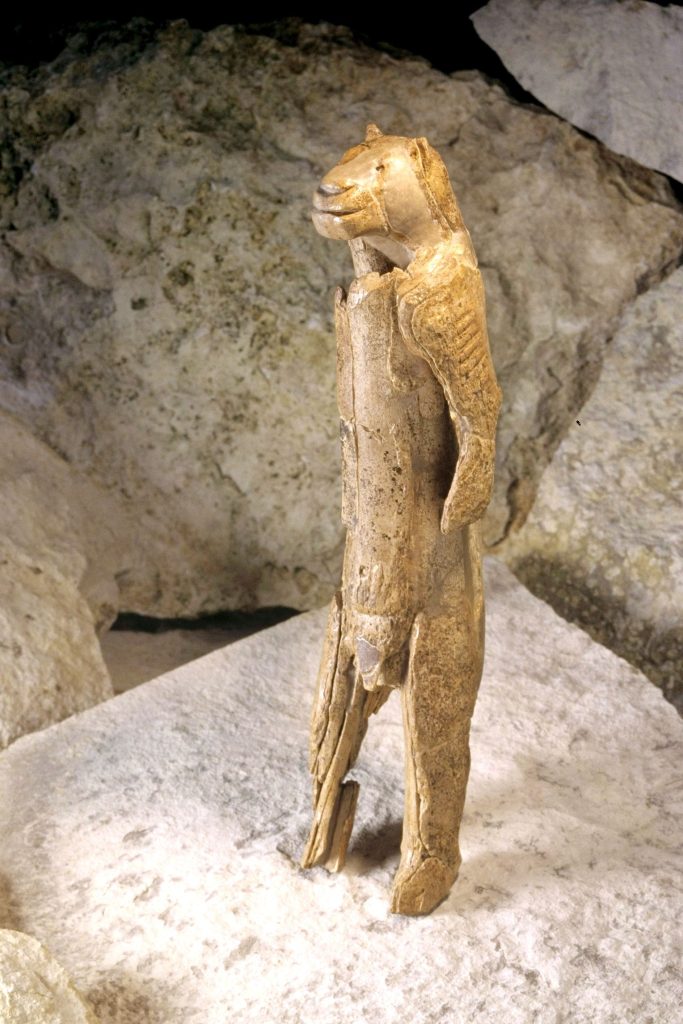A sculpture is a piece of art that conveys ideas, creativity, and emotions. Some endure for a lifetime, while others do so for a very long period.
Have you ever considered the potential age of sculptures? Because they are generally constructed of durable materials. Therefore, there is a strong likelihood that they predate some civilizations.
We have therefore compiled a list of the ten oldest sculptures
- Laocoön and His Sons
Laocoön and His Sons also referred to as the Laocoön Group, is one of the most well-known antique sculptures in contemporary culture. For an art object that had been excavated, the statue was in excellent condition. The masterpiece still lacks a few pieces, as this may be the case.
The Laocoön and His Sons were renovated numerous times in the past, according to studies.
It is also believed that the play, The Laocoön and His Sons tells the tale of Laocoön, a Trojan priest, and his sons Thymbraeus and Antiphantes.
They were being assaulted by sea snakes in this statue. Pliny the Elder, a well-known Roman art critic, gave the monument the highest acclaim for its minute attention to detail and graphic face description.
This Sculpture located in Vatican museums, Rome, Italy is estimated to be 2,049 to 2,090 years old.
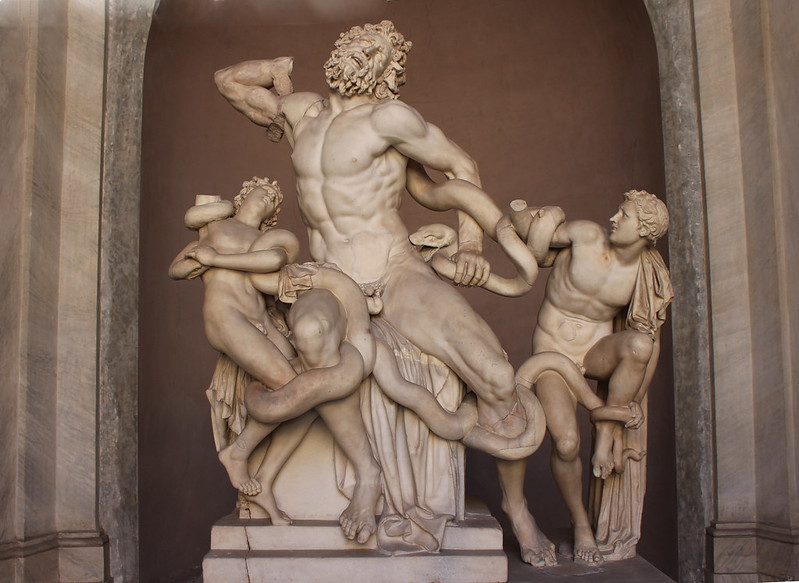
- Venus de Milo
Venus de Milo is one of the stand-out artworks in France’s Louvre Museum in Paris. It is estimated to be 2400 years old. It was first built on the Island of Milos, Greece before it was moved to France.
In 1820, the Venus de Milo was rediscovered. Praxiteles was thought to have sculpted it at first. The life-size statue, however, was later determined to be the work of Alexandros of Antioch. Even though the artwork is missing both of its arms, its beauty is still visible.
It is believed that Venus de Milo’s true purpose or identity has yet to be determined. Most scholars believe it is Aphrodite, the Greek goddess of love. Others refer to the sculpture as Aphrodite de Milos because “Venus” is a Roman goddess name.
Other scholars believe that the statue depicts Amphitrite, the sea-goddess worshipped by the Milos
islanders.
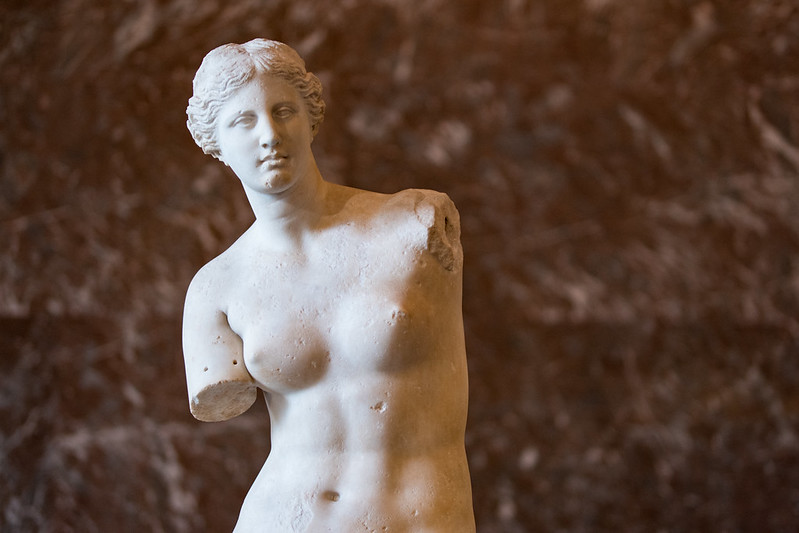
- Hermes and the Infant Dionysus Age: 2,400 years old (estimated)
Place of discovery: Temple of Hera, Olympia, Greece
Material: Parian marble
Current location: Archaeological Museum of Olympia
Praxiteles is thought to have created the Hermes and the Infant Dionysus based on a remark made by the Greek traveler Pausanias. However, there is still considerable disagreement about who created the statue.
An earthquake struck the Olympia site, where Hermes and the Infant Dionysus were discovered. The statue was destroyed when the building collapsed.
Greece collaborated with Germany to investigate the Olympia site in 1874. That’s when the statue was discovered. Scholars were able to piece them together even though they were broken into pieces. The restored statue can now be found in Olympia’s Archaeological Museum.
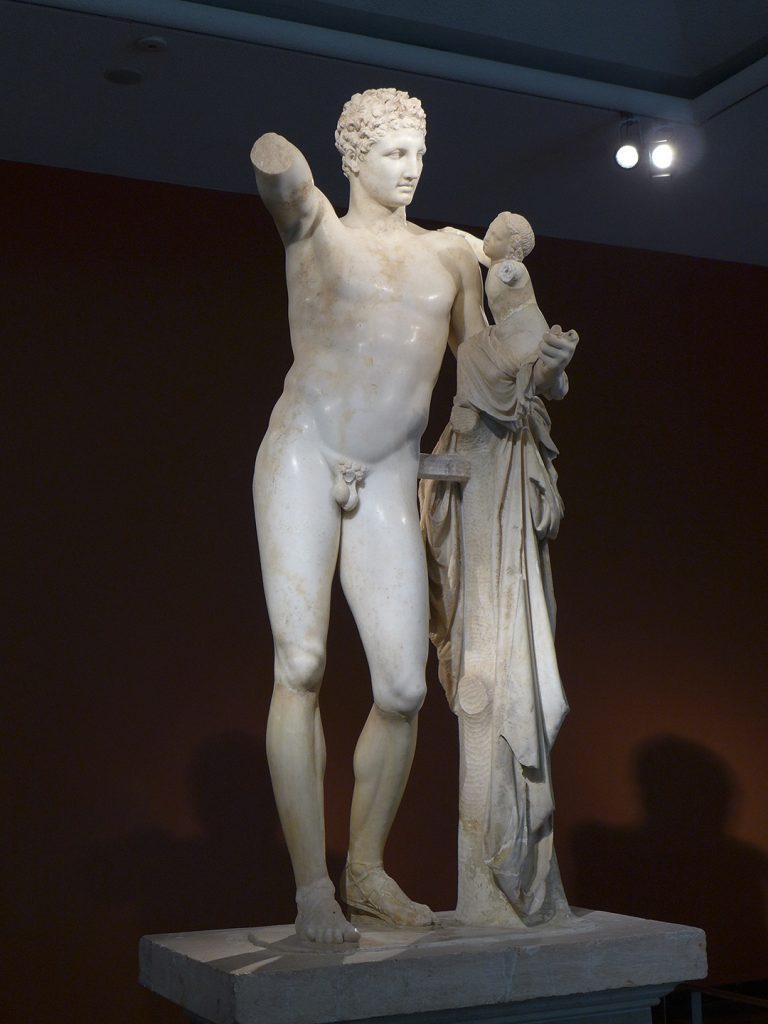
- Charioteer of Delphi Age: 2,496 to 2.500 years old (as of 2022) Place of discovery: Sanctuary of Apollo in Delphi, Greece Material: Bronze Current location: Delphi Archaeological Museum
French excavators near the temple of Apollo discovered the Charioteer of Delphi in 1896. The find was unusual because only a few bronze statues survive the test of time.
The life-size statue, with its great detail and exquisite carving, reminds modern people of what it was like to live in ancient Greece. Only the statue remained, and no horses were rebuilt. Although it is believed that the statue was originally accompanied by four horses.
The statue is attributed to the Pythagoras of Samos by the majority of scholars.
The tyrant ruler Polyzalus of Gela commanded the creation of the Charioteer of Delphi. The statue is thought to be there for two reasons. One is to commemorate Polyzalus’ Pythian Games victory. The second one is to offer thanks to the god Apollo.
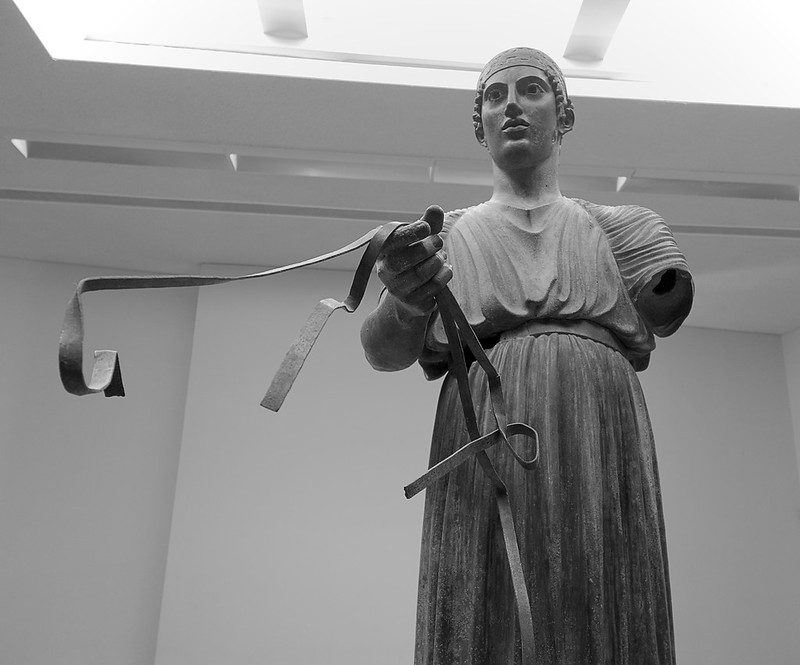
- Great Sphinx of Giza
- Age: 4,300-4,500 years old Place of discovery: Limestone Material: Partially restored Current location: Giza, Egypt
Scholars believe that the Great Sphinx of Giza was built during the reign of Khafre, between 2558 and 2532 BC. It is one of the most famous and recognizable statues in the world due to its enormous size.
The Sphinx was carved out of bedrock at first. After that, layers of limestone blocks were added to restore their shape and form.
The Great Sphinx of Giza is enormous. It is the world’s largest monolithic statue, measuring 73 meters in length, 20 meters in height, and 19 meters in width. In the ancient world, the Sphinx was associated with the sun god, Horus of the Horizon.
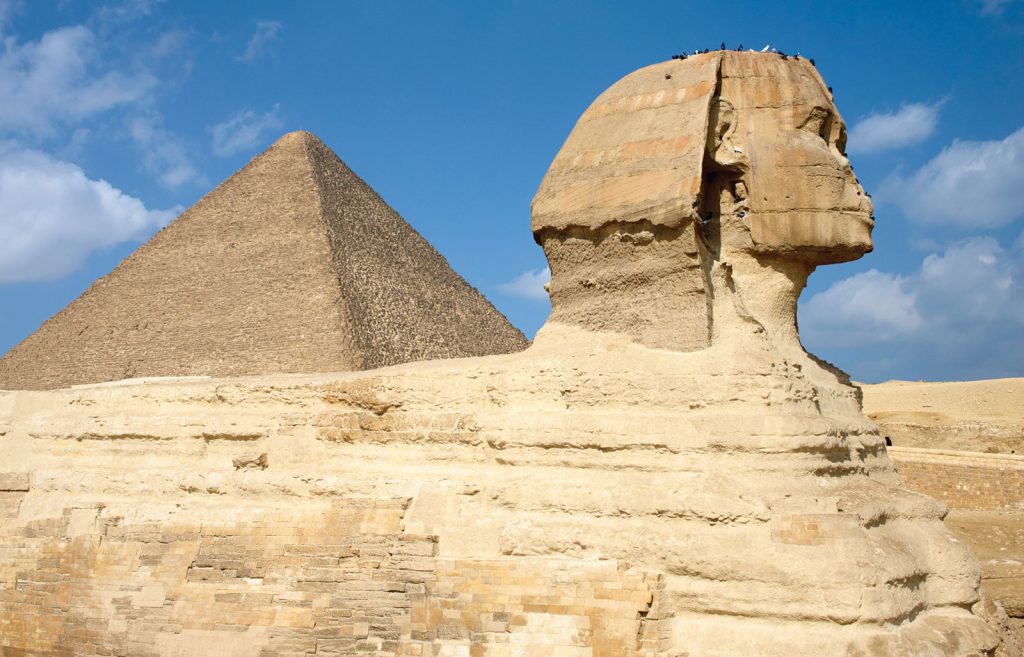
- ‘Ain Ghazal statues Age: 9,000 years old
Place of discovery: Archeological site of ʿAin Ghazal in Jordan
Material: Plaster and reed
Current location: Jordan Museum and Amman Citadel in Amman and other museums
The Ain Ghazal statues are a collection of lime plaster and reed statues. They’re thought to have been carved between 7200 and 6500 BC. The Ain Ghazal statues are thought to be the earliest large-scale statues formed with human likeness due to their age.
The Ain Ghazal statues are remarkably well-preserved for their age. They were discovered in 1983 at the Ain Ghazal site. Initially, about 15 busts and 15 statues were discovered in the area. The statues survived the test of time because they were meticulously stored in pits dug beneath the floors of ancient houses.

- Venus of Dolní Věstonice Age: 25,000 to 29,000 years old
Place of discovery: Paleolithic site Dolní Věstonice, Czech Republic
Material: Ceramic
Current location: Protected by Moravian Museum
Karel Absolon led systematic archaeological research that led to the discovery of the small statue in 1925. The Venus of Dolni Vstonice, like other Venus figurines, has the typical morphological appearance. It has a small head, large hips and bellies, and large breasts. Other body parts have few details.
The Venus of Dolni Vstonice is regarded as a fertility symbol and may have been used in ritualistic rites.
Researchers believe that the Venus of Dolni Vstonice was originally adorned with feathers on its head. Four holes on the top of the head allow you to easily insert small feathers. As a result, the original appearance of this sculpture may have been more beautiful than it is today.
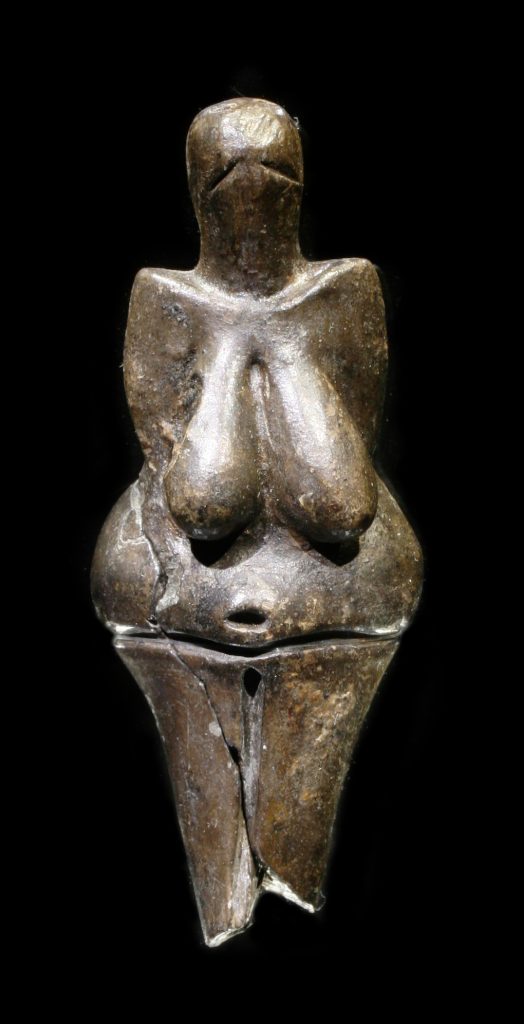
- Venus of Willendorf Age: 25,000 to 30,000 years old
Place of discovery: Paleolithic site near Willendorf, Lower Austria
Material: Oolitic limestone
Current location: Natural History Museum in Vienna, Austria
The Venus of Willendorf was discovered in August 1908 during an excavation led by Josef Bayer, Josef Szombathy, and Hugo Obermaier.
It’s quite interesting that the figurine was made of oolitic limestone, which is not commonly found in the excavation area. This suggests that the figurine was made somewhere else and was simply brought to the location where it was discovered. It is also tainted with red ochre.
Willendorf’s Venus is regarded as one of the “Venus figurines.” However, because Venus is only a metaphor, some scholars prefer to refer to them as “woman figurines.”
This figurine, according to legend, represents a fertility goddess. Little is known about its history, how it was created, and even what it looks like.
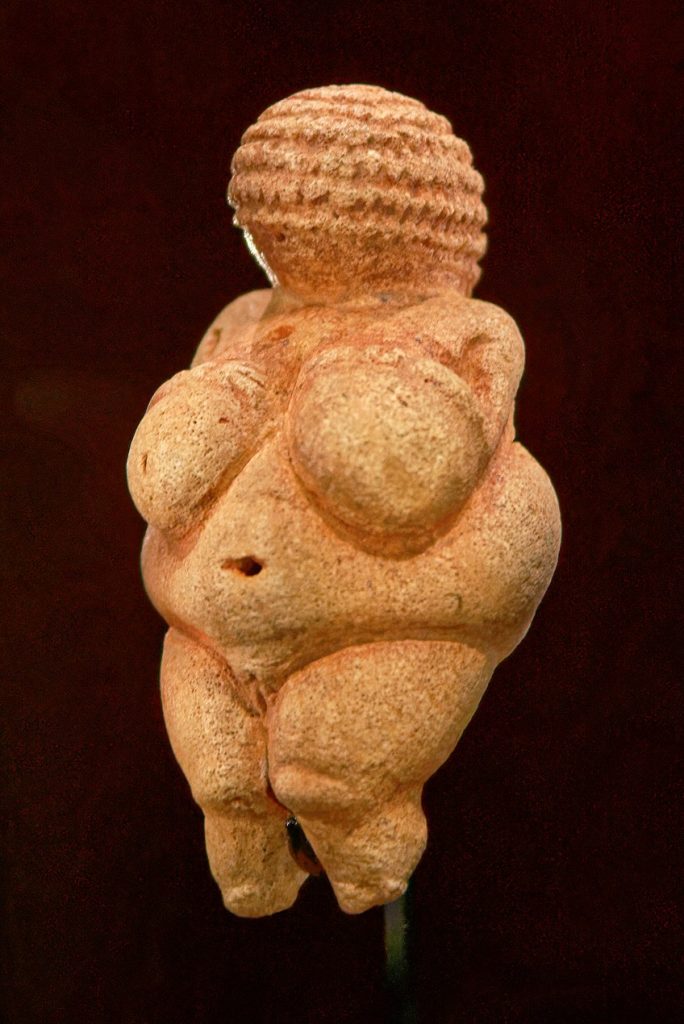
- Venus of Hohle Fels Age: 35,000 to 40,000 years old
Place of discovery: Schelklingen, Germany
Material: Prehistoric Museum of Blaubeuren
Current location: Venus of Schelklingen
The Venus of Hohle Fels is thought to be the oldest human-figure figurine. It is thought to have been carved by an Aurignacian Cro-Magnon man during the early Upper Paleolithic era.
The sculpture is made from a woolly mammoth tusk. When the figurine was discovered, it had been broken into fragments. Fortunately, the majority of its components have been discovered.
The Venus of Hohle Fels is an exaggerated sculpture of a woman’s body. Archaeologists believe this is a sex and reproduction figurine. Some believe it is pornographic, while others believe it is a symbol of beauty and longevity.
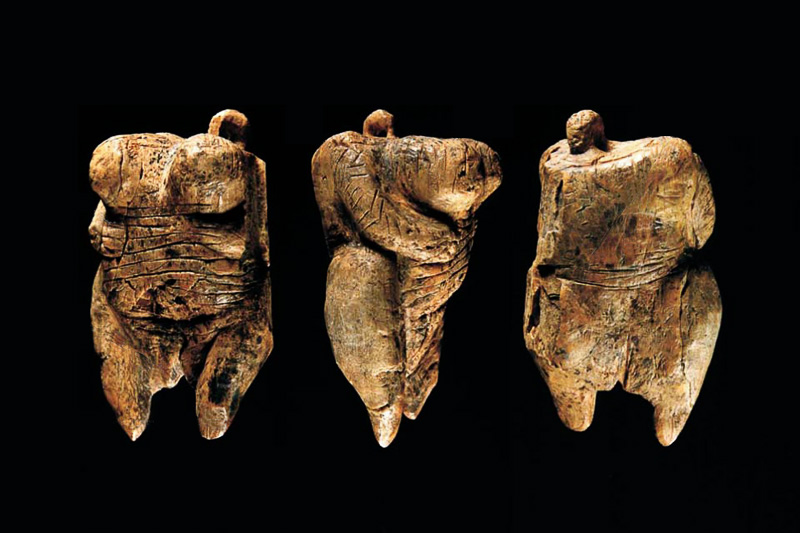
- Lion-man Age: 35,000 to 40,000 years old
Place of discovery: Hohlenstein-Stadel, Germany
Material: ivory
Current location: Löwenmensch figurine; Lion-Human of Hohlenstein-Stadel
The Lion-man is the world’s oldest sculpture. In 1939, it was discovered in a German cave. Archaeologists believe the sculpture was made during the Upper Paleolithic period.
Looking at the figurine, it appears to be a human with the head of a lion. The figurine is made of mammoth ivory and is a work of zoomorphic art. The cuts indicate that the sculpture was carved with a flint stone knife.
The gender of the Lion-man is debatable. Some believe the plate on the figurine’s abdomen is a flaccid penis. Others think it’s a pubic triangle. Nonetheless, the figurine is quite small. It measures approximately 12 inches tall, 2.2 inches wide, and 2.3 inches deep.
